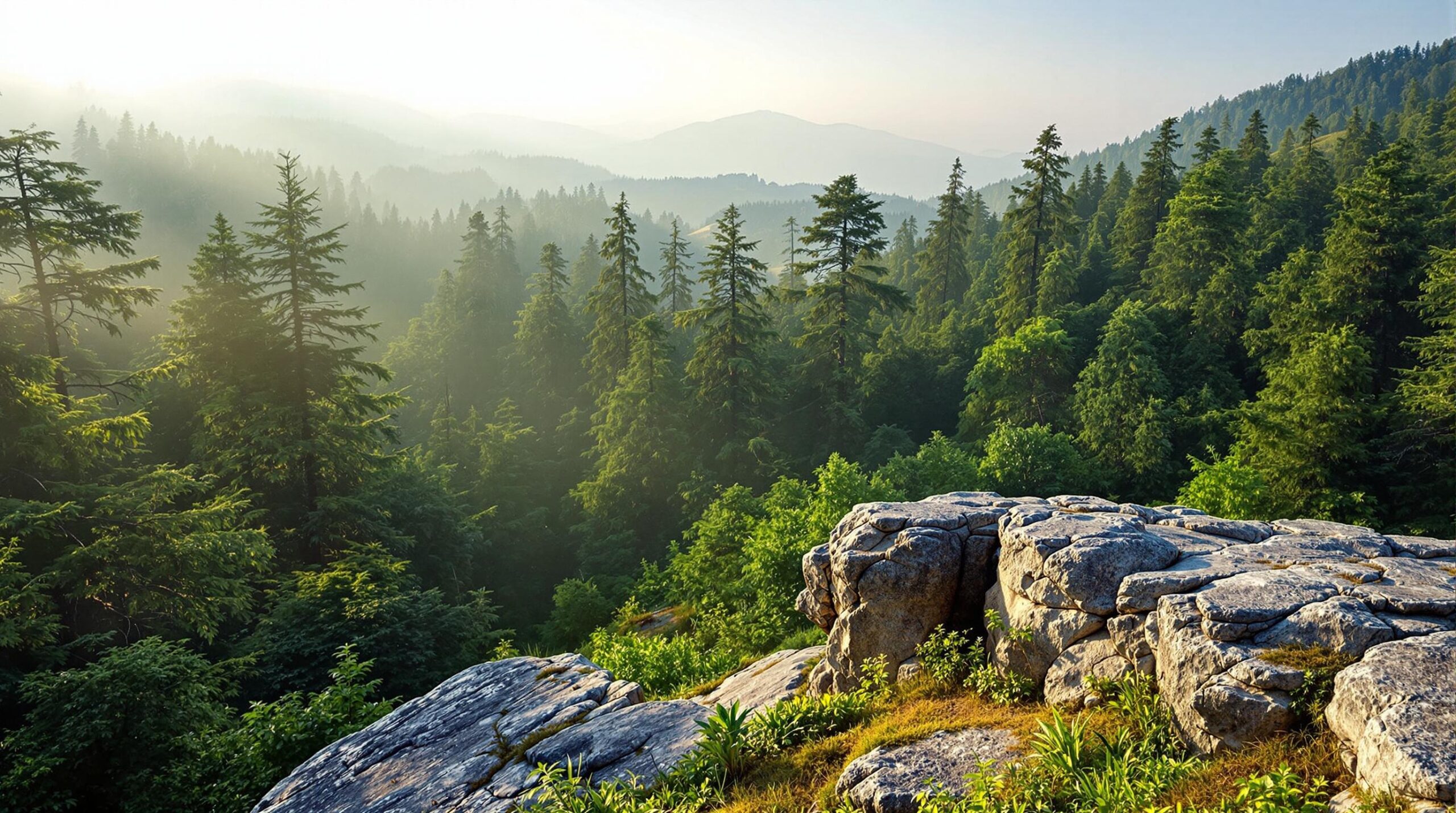In March 2025, nearly 500 acres known as White Rocks Gateway were formally added to Vermont’s Green Mountain National Forest through a conservation project led by the Trust for Public Land. The national forest itself spans about 821,000 acres a news account states, while White Rocks Gateway sits adjacent to approximately 270,000 acres of other conserved lands.
The parcel, measuring 464 acres in official documents, rises over 1,000 feet from the Otter Creek lowlands to the western slopes of the Green Mountains. It has bright quartzite cliffs, varied wildlife habitats, and informal trails used by hikers interested in exploring the area’s scenic vistas.
Decades of public access reportedly influenced efforts to integrate this land under formal protection. Connections to established routes such as the Appalachian Trail and the Long Trail may draw through-hikers who seek new overlooks and backcountry routes in an expanded protected zone.
According to details shared by the Trust for Public Land, black bears, moose, bobcats, deer, and numerous bird species move through these habitats. The organization indicates that conservation under Green Mountain Escarpment guidelines allows for biodiversity safeguards alongside responsible recreation.
Officials from the Forest Service plan to review potential improvements for public entry points leading to Ice Beds Trail, Butternut Falls, and other natural features. Such steps may entail updating signage, establishing safe parking options, and maintaining designated routes that reduce impacts on sensitive flora and fauna.
Documents describing the initiative state that multiple organizations helped finance White Rocks Gateway’s acquisition. The Land and Water Conservation Fund and the Appalachian Trail Conservancy contributed, among other partners such as Altra Running and Athletic Brewing Company, emphasizing a collective dedication to protecting open spaces.
As usage increases, nearby campgrounds and recreation providers may consider infrastructure updates. Recognized environmental agencies suggest permeable materials for parking, bear-proof containers for waste, and visible trail markers to keep visitors on approved paths and prevent habitat disturbance. Climbing routes in the quartzite cliffs could also benefit from guidelines that limit nocturnal lighting and reduce noise.
Owners and operators in the outdoor hospitality sector can prioritize eco-friendly campsite and trail infrastructure to accommodate higher visitor traffic while minimizing environmental impact. Common measures include using permeable materials for parking areas, installing bear-proof waste containers, and employing low-impact lighting solutions. Thoughtfully placed signage can help navigators stay on designated routes, preventing harm to wildlife and fragile vegetation.
The newly included White Rocks Gateway is likely to attract clusters of hikers, climbers, and cross-country skiers. By applying responsible infrastructure practices that align with existing conservation goals, property owners near the Green Mountains can help safeguard habitats crisscrossed by black bears, moose, and other species.
Outdoor hospitality businesses may also benefit from digital platforms to manage reservations, highlight local attractions, and communicate safe recreation strategies. Real-time trail condition updates and streamlined booking systems can help regulate visitor volumes, while coordinated promotions with tourism boards and conservation groups showcase new recreational sites.
By spotlighting opportunities at White Rocks Gateway, including routes to Butternut Falls or the Ice Beds Trail, campground operators can attract visitors eager to explore newly connected public lands. Working with nonprofit organizations and local grant programs can further publicize trails like the Appalachian Trail and Long Trail, aligning with broader goals of balancing recreation and conservation.
Project materials credit the family owners who had informally welcomed the public for many years. With permanent protections now in place, hikers, climbers, and other travelers have reliable access to scenic overlooks, while wildlife species benefit from long-term habitat continuity. Official statements indicate that the Green Mountain Escarpment framework prioritizes both visitor enjoyment and ecological stability, suggesting that this addition may act as a model for future conservation initiatives in Vermont.


